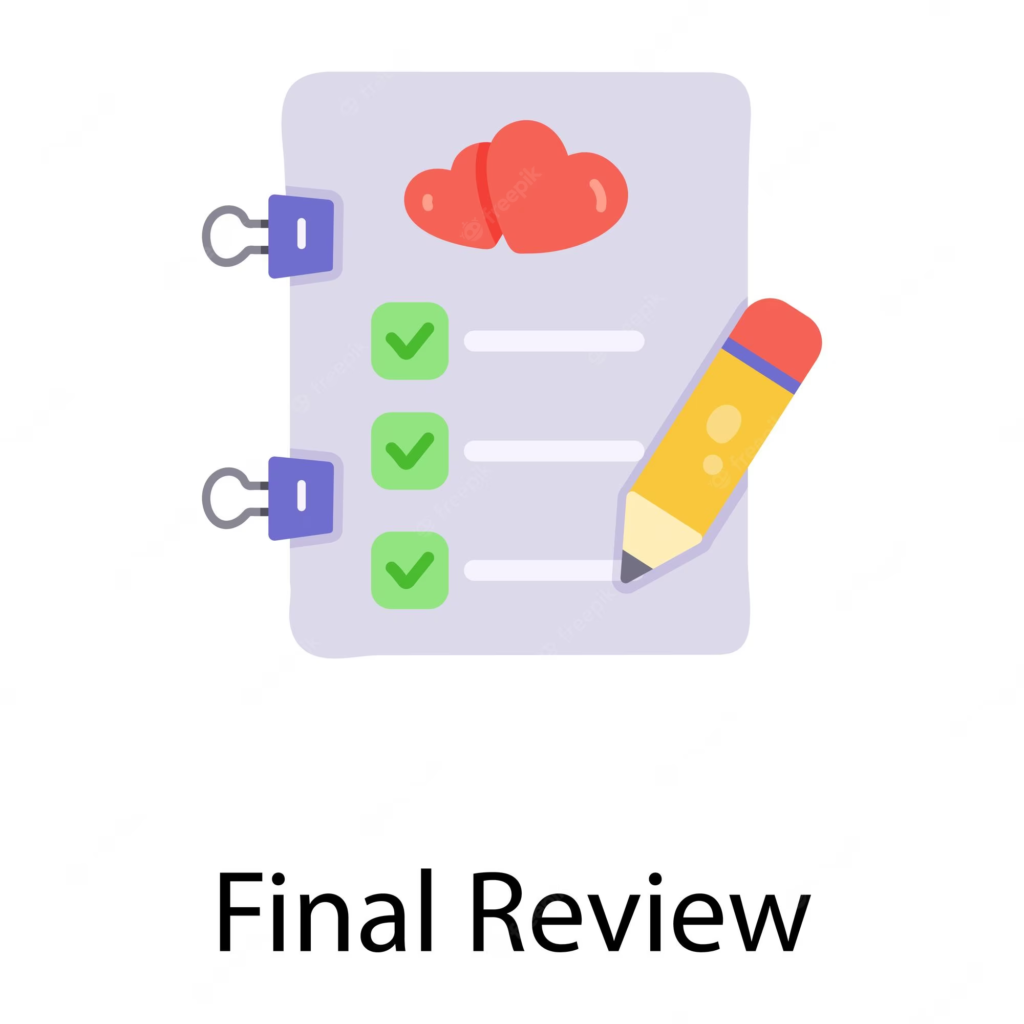According to LinkedIn, more than 70% of professionals believe that skills are more important than formal education when it comes to career advancement.
As a result, LinkedIn has introduced a feature called “LinkedIn Skills Assessments” that allows individuals to showcase their expertise in various areas and validate their skills. The LinkedIn Skills Assessment tests are designed to evaluate a person’s proficiency in specific subjects, such as coding languages, software tools, or business knowledge.
By successfully completing these assessments, professionals can demonstrate their capabilities to potential employers and enhance their credibility on the platform.
In this guide, we will explore the steps to effectively prepare for a LinkedIn Skills Assessment and increase your chances of success.
step-by-step process of How To Prepare For the LinkedIn Skills Assessment
Step 1: Identify the skills assessment
To begin preparing for a LinkedIn Skills Assessment, you need to identify the specific assessment you want to focus on.

LinkedIn offers a diverse range of assessments covering various areas. Here’s how to proceed:
1. Explore LinkedIn’s assessments:
Visit the LinkedIn Learning platform or the Skills section on your LinkedIn profile to explore the available skills assessments. Browse through the different categories and assessments to find the one that aligns with your goals and interests.
2. Consider your expertise and goals:
Consider your current skills, expertise, and career goals. Select an assessment that complements your existing knowledge or targets a skill you want to develop further. This will help you derive the most value from the assessment.
3. Research assessment details:
Once you have identified a specific skills assessment, delve into the details provided by LinkedIn. Understand the assessment format, time duration, and the specific topics or areas it will cover. This information will guide your preparation strategy.
Identifying the skills assessment is the first crucial step towards preparing for a LinkedIn Skills Assessment. By selecting the most relevant assessment, you can align your efforts with your career objectives and make targeted progress in your chosen skill area.
Step 2: Review the assessment details
Before diving into your preparation for a LinkedIn Skills Assessment, it’s crucial to review the assessment details provided by LinkedIn.

This step ensures that you have a clear understanding of what to expect. Here’s how to proceed:
1. Assessment format:
Familiarize yourself with the format of the assessment. Determine whether it consists of multiple-choice questions, coding exercises, case studies, or a combination of different types. This knowledge will help you tailor your preparation strategy accordingly.
2. Duration:
Note the time limit for the assessment. Understand how much time you will have to complete the assessment. This information will guide you in managing your time effectively during the actual assessment.
3. Covered topics:
Identify the specific topics or skills that will be assessed. Take note of the areas you need to focus on during your preparation. LinkedIn usually provides a breakdown of the knowledge areas or competencies that will be evaluated.
By thoroughly reviewing the assessment details, you can gain a clear understanding of the assessment format, time constraints, and the specific topics you need to concentrate on. This knowledge will enable you to structure your study plan and direct your efforts efficiently.
Step 3: Assess your current knowledge
Before diving into your preparation for a LinkedIn Skills Assessment, it is crucial to assess your current knowledge and proficiency in the subject matter.

This self-assessment will guide you in identifying your strengths and areas that require improvement. Here’s how to proceed:
1. Evaluate existing knowledge:
Reflect on your understanding of the subject matter covered in the skills assessment. Consider your previous experience, education, and practical skills related to the topic. Assess your level of familiarity and confidence in each area.
2. Identify areas for improvement:
Identify specific areas where you feel less confident or lacking in knowledge. This could be a particular skill, concept, or topic within the assessment. By recognizing these gaps, you can prioritize them during your preparation and allocate more time to strengthen these areas.
3. Prioritize study efforts:
Based on your self-assessment, prioritize your study efforts by focusing on areas that require improvement. Allocate more time and resources to these topics, ensuring a targeted and efficient approach to your preparation.
By assessing your current knowledge and identifying areas for improvement, you can tailor your study plan to address your specific needs. This self-evaluation will help you allocate your time and efforts effectively, maximizing your chances of success in the LinkedIn Skills Assessment.
Step 4: Gather relevant study materials
To prepare for a LinkedIn Skills Assessment, it is crucial to gather appropriate study materials. LinkedIn offers recommended resources to aid your preparation.

Here’s how to proceed:
1. Utilize LinkedIn Learning courses:
Explore the LinkedIn Learning platform for courses directly related to the skills assessment you are preparing for. These courses are designed to provide in-depth knowledge and practical insights into the subject matter. Take advantage of the diverse range of courses available to strengthen your understanding of the assessment topics.
2. Seek relevant articles and videos:
Search for articles and videos on LinkedIn or other reputable platforms that cover the topics included in the skills assessment. These resources can provide additional perspectives, tips, and explanations that complement your learning. Take notes and extract valuable information from these materials.
3. Explore external resources:
In addition to LinkedIn’s recommended materials, consider external resources such as books, online tutorials, forums, and educational websites. These resources can offer different explanations and approaches, giving you a broader understanding of the subject matter.
By utilizing a variety of resources, including LinkedIn Learning courses, relevant articles, videos, and external materials, you can gather a comprehensive set of study materials that cover the topics included in the LinkedIn Skills Assessment. This will enhance your preparation and increase your chances of success.
Step 5: Create a study plan
To prepare effectively for a LinkedIn Skills Assessment, it is crucial to develop a study plan that will guide your preparation and keep you organized.

Here’s how to create a study plan for optimal results:
1. Set specific goals:
Define clear and specific goals for your preparation. Identify the skills and knowledge areas you want to focus on, based on the assessment requirements. This will help you prioritize your study efforts and stay on track.
2. Allocate dedicated study time:
Determine how much time you can dedicate to studying each day or week. Be realistic and ensure that you allocate sufficient time to cover all the topics. Breaking down your study sessions into manageable chunks will help prevent overwhelm and facilitate effective learning.
3. Divide topics or skill areas:
Break down the assessment topics or skill areas into smaller sections. Assign specific study time for each section based on its complexity and your familiarity with the subject matter. This will allow you to cover all the necessary content within your study plan timeline.
4. Create a schedule:
Establish a schedule that outlines your study plan. Use a calendar, planner, or digital tools to create a visual representation of your study schedule. Set specific study times for each topic or skill area, ensuring a balanced and comprehensive approach to your preparation.
5. Stay focused and make progress:
Stick to your study plan and stay committed to the allocated study times. Minimize distractions and create a conducive learning environment. By adhering to your schedule, you can make consistent progress and build momentum leading up to the assessment.
Step 6: Study systematically
To effectively prepare for a LinkedIn Skills Assessment, it’s important to adopt a systematic approach to studying.

This step involves breaking down the topics into manageable sections and engaging in various learning activities.
Here’s how to study systematically:
1. Break down topics:
Divide the skills and topics covered in the assessment into smaller, manageable sections. This helps prevent overwhelming yourself and allows for focused learning.
2. Take comprehensive notes:
As you study each section, take detailed and organized notes. Summarize key concepts, definitions, and important information. This will serve as a useful reference for revision.
3. Practice exercises:
Engage in practice exercises related to the assessed skills. Apply your knowledge by solving problems or completing tasks that simulate real-life scenarios. This hands-on approach reinforces understanding and builds confidence.
4. Hands-on learning:
Whenever possible, engage in hands-on learning experiences. Use relevant tools, software, or platforms to gain practical experience in applying the skills being assessed. The practical application enhances comprehension and retention.
By studying systematically, breaking down topics, taking comprehensive notes, practicing exercises, and engaging in hands-on learning, you can reinforce your understanding and increase your readiness for the LinkedIn Skills Assessment.
Step 7: Practice with sample questions

To boost your readiness for a LinkedIn Skills Assessment, practicing with sample questions is crucial. Here’s a concise breakdown of this step:
1. Find sample questions:
Search for sample questions or practice assessments related to the specific skills assessment you are preparing for. LinkedIn itself may offer sample questions, or you can explore online platforms that provide relevant practice materials.
2. Familiarize with assessment format:
As you practice, pay attention to the format of the assessment. Understand the structure, types of questions, and any time constraints. This familiarity will help you feel more comfortable and confident during the actual assessment.
3. Improve speed and accuracy:
Engage in answering the sample questions to enhance your speed and accuracy. Focus on comprehending the questions, strategizing effective approaches, and practicing efficient time management.
By practicing with sample questions, you can become familiar with the assessment format and refine your performance, ultimately increasing your chances of success in the LinkedIn Skills Assessment.
Step 8: Seek additional resources and support

If you encounter challenging topics while preparing for a LinkedIn Skills Assessment, it’s important to seek additional resources and support. Here’s how:
1. Join relevant LinkedIn groups or communities:
Look for LinkedIn groups or communities focused on the subject area of the assessment. Join these groups to connect with professionals who have expertise in the same field. Engage in discussions, share insights, and learn from their experiences.
2. Participate in discussions:
Actively participate in discussions within these groups or communities. Ask questions, seek clarification, and contribute your own knowledge. Engaging with others will provide different perspectives and help you gain a deeper understanding of the topics.
3. Learn from those who have taken the assessment:
Connect with individuals who have already taken the same LinkedIn Skills Assessment or are also preparing for it. Seek their guidance and insights on how to approach the assessment effectively. They can offer valuable tips, share study resources, or provide advice based on their own experiences.
By leveraging additional resources and seeking support from others, you can gain a broader understanding of the topics and overcome any challenges you may face during your preparation for the LinkedIn Skills Assessment.
Step 9: Track your progress

Tracking your progress during your LinkedIn Skills Assessment preparation is crucial to ensure you are on the right path and making the necessary improvements. Here’s how to effectively monitor your progress:
1. Regular assessment:
Consistently evaluate your progress to determine if you are meeting your study goals and staying on track with your study plan. Take time to assess your understanding of the topics you have covered so far.
2. Review and revisit:
Regularly review your notes and study materials to reinforce your understanding of the subject matter. Identify challenging areas and revisit them to deepen your knowledge and address any gaps in understanding.
3. Track improvements:
Keep a record of your performance and improvements over time. Track your scores in practice assessments or quizzes to observe progress. This will help you gauge how well you are grasping the material and identify areas where you need additional focus.
Tracking your progress allows you to identify areas for improvement and make necessary adjustments to your study plan. It helps you stay motivated and ensures you are adequately prepared for the LinkedIn Skills Assessment.
Step 10: Final Review and confidence-building
As the assessment date draws near, it’s crucial to conduct a final review of all the topics covered during your preparation.

This step aims to reinforce your understanding and solidify your knowledge. Here’s what you should do:
1. Comprehensive review:
Dedicate time to review all the topics included in the skills assessment. Go through your study materials, notes, and practice questions to refresh your memory. Focus on areas that you find challenging or need additional reinforcement.
2. Strengthen weak areas:
Identify any weak areas or concepts that you struggled with during your preparation. Allocate extra time to study and practice these specific topics. Seek additional resources or guidance if necessary to enhance your understanding and proficiency.
3. Confidence-building:
Remind yourself of the progress you have made throughout your preparation. Reflect on the knowledge and skills you have acquired. Recognize the effort you have invested in studying and practicing. Boost your confidence by acknowledging your preparation and feeling positive about your abilities.
A solid final review combined with confidence-building techniques will help you approach the skills assessment with a sense of preparedness and self-assurance. Embrace the knowledge you have gained, trust in your abilities, and perform your best on the assessment.
In conclusion, preparing for a LinkedIn Skills Assessment requires a systematic approach and dedicated effort. By following the step-by-step process outlined above, you can effectively prepare yourself for success. Remember to identify the skills assessment, review the details, assess your knowledge, gather study materials, create a study plan, practice with sample questions, seek support, track your progress, and conduct a final review while building your confidence. With thorough preparation, you’ll be well-equipped to showcase your skills and enhance your professional credibility on LinkedIn. Best of luck in your skills assessment journey!

